Tools/supplies Needed:
Pliers
10mm Allen Wrench, T-handle
1.5 ft. of clear flexible tubing (1 in. diameter)
Container marked of f at 1 qt. (did this with a measuring cup and sharpie marker)
Collection pan to collect the used transmission fluid
Flat Head Screwdriver
Transmission Fluid Funnel
Experience needed: I would say some experience working on cars, at least be able to do your own oil changes before you try to do this. You will also need one person around to help.
![Image]()
Step 1: Drive car around for about 10 minutes to warm everything up. Park it, run through all the gears (P, R, N, D, and then back to P) and leave the engine running. Pull the transmission dip stick out, wipe clean, insert back in but rotate 180 degrees and push all the way down. Pull back out and check the level (remember where it is so you can refill back to same location, should be at the second notch). This is also where you will add transmission fluid.
![Image]()
Step 2: Raise the front end of the vehicle somehow. I have small ramps I use for changing my oil so I drove up onto these. Turn off the car.
Step 3. With the dip stick pulled out. Place a collection pan underneath the transmission drain plug. Using the hex screwdriver/tool, unscrew the drain plug. Notice that it doesn’t take much force to unscrew this so don’t over tighten when putting back on. Allow all of the fluid to drain, I left it to drain for about 15 min.
![Image]()
![Image]()
Step 4. Screw the drain plug back on. I think you can replace the o-ring on the drain plug but I didn’t do this.
Step 5. Measure how much fluid you drained out by using your container that you marked off at 1 qt. I drain roughly 4.5 qts. Add the same amount of fluid you took out back into the transmission through the recharging pipe (same place you pulled the dip stick out) using your funnel.
![Image]()
Step 6. Remove the wheel well splash guards from the driver’s side wheel (be careful with the tabs holding these on, easy to break). Take your time a pry them off slowly with a flat head screw driver. Remove to reveal the transmission fluid inlet port (where fluid comes in from the radiator).
![Image]()
Step 7. Using your pliers, squeeze and slide off the hose clamp holding the tube onto the inlet port.
![Image]()
Step 8. Place the tube you remove into your 1in. diameter clear plastic tube. Direct it into your container marked at 1 qt.
Step 9. Have a friend start your car. Allow it to run until you have removed 1 qt. of fluid and then turn the car off.
![Image]()
Step 10. Add a qt. of new fluid back into the transmission (to replace the qt. you flushed out).
Step 11. Repeat steps 9 and 10 until you’ve collected a replaced roughly 6 qts. of fluid. It start to get clean around 5 qts. I did an extra one for good measure.
Step 12. Reconnect your hose to the transmission inlet port and using your pliers, squeeze the hose clamp and slide it back onto the hose. This is the hardest part of the whole thing, trying the get that stupid clamp back on.
Step 13. Start the car and let it run for a minute. Go around and check for any leaks.
Step 14. Lower the car down. Run it back through all the gears and check the fluid level just as before. Adjust the fluid as needed.
Step 15. Place the splash guards back on and that’s it. You are done.
Pliers
10mm Allen Wrench, T-handle
1.5 ft. of clear flexible tubing (1 in. diameter)
Container marked of f at 1 qt. (did this with a measuring cup and sharpie marker)
Collection pan to collect the used transmission fluid
Flat Head Screwdriver
Transmission Fluid Funnel
Experience needed: I would say some experience working on cars, at least be able to do your own oil changes before you try to do this. You will also need one person around to help.
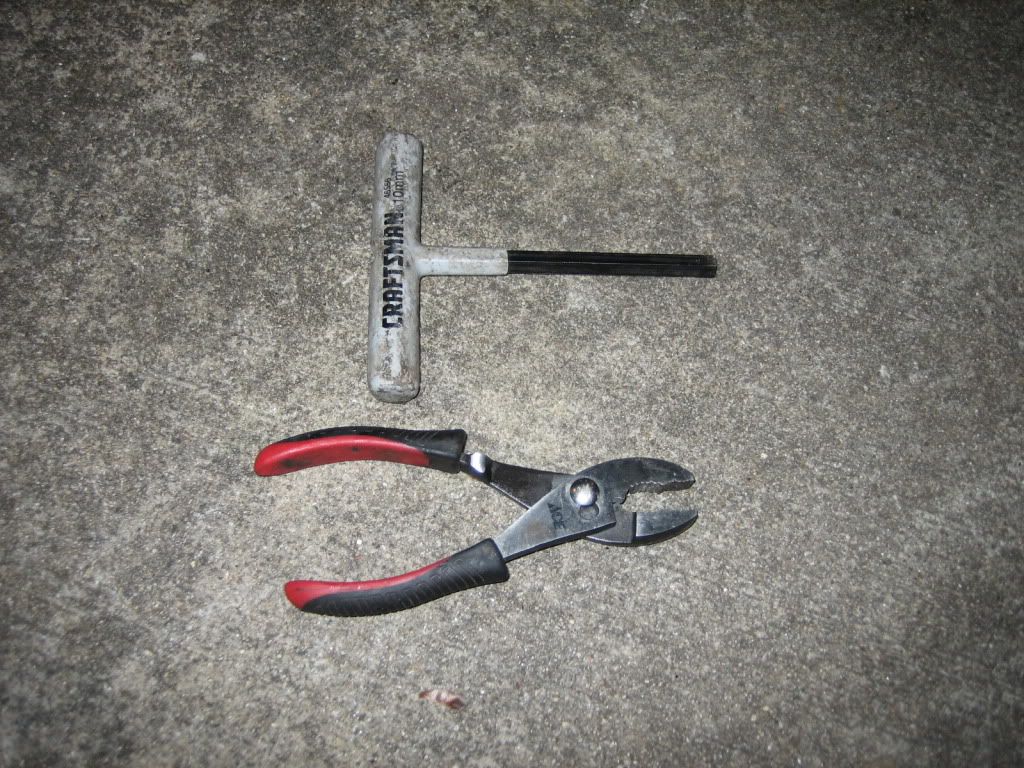
Step 1: Drive car around for about 10 minutes to warm everything up. Park it, run through all the gears (P, R, N, D, and then back to P) and leave the engine running. Pull the transmission dip stick out, wipe clean, insert back in but rotate 180 degrees and push all the way down. Pull back out and check the level (remember where it is so you can refill back to same location, should be at the second notch). This is also where you will add transmission fluid.
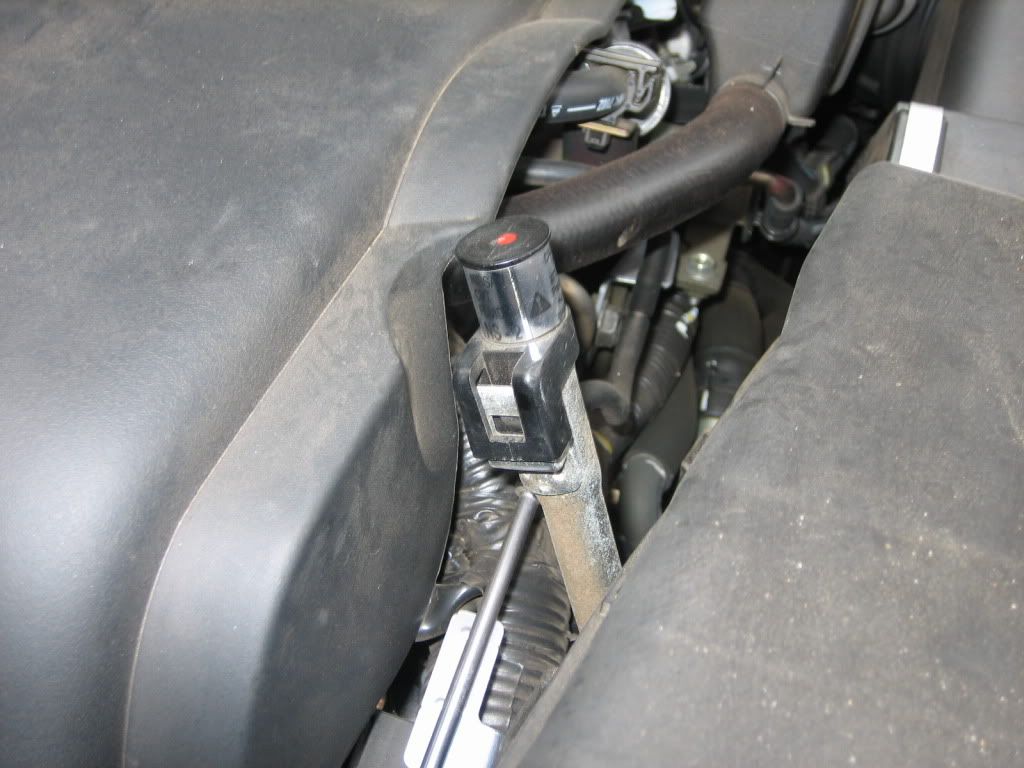
Step 2: Raise the front end of the vehicle somehow. I have small ramps I use for changing my oil so I drove up onto these. Turn off the car.
Step 3. With the dip stick pulled out. Place a collection pan underneath the transmission drain plug. Using the hex screwdriver/tool, unscrew the drain plug. Notice that it doesn’t take much force to unscrew this so don’t over tighten when putting back on. Allow all of the fluid to drain, I left it to drain for about 15 min.
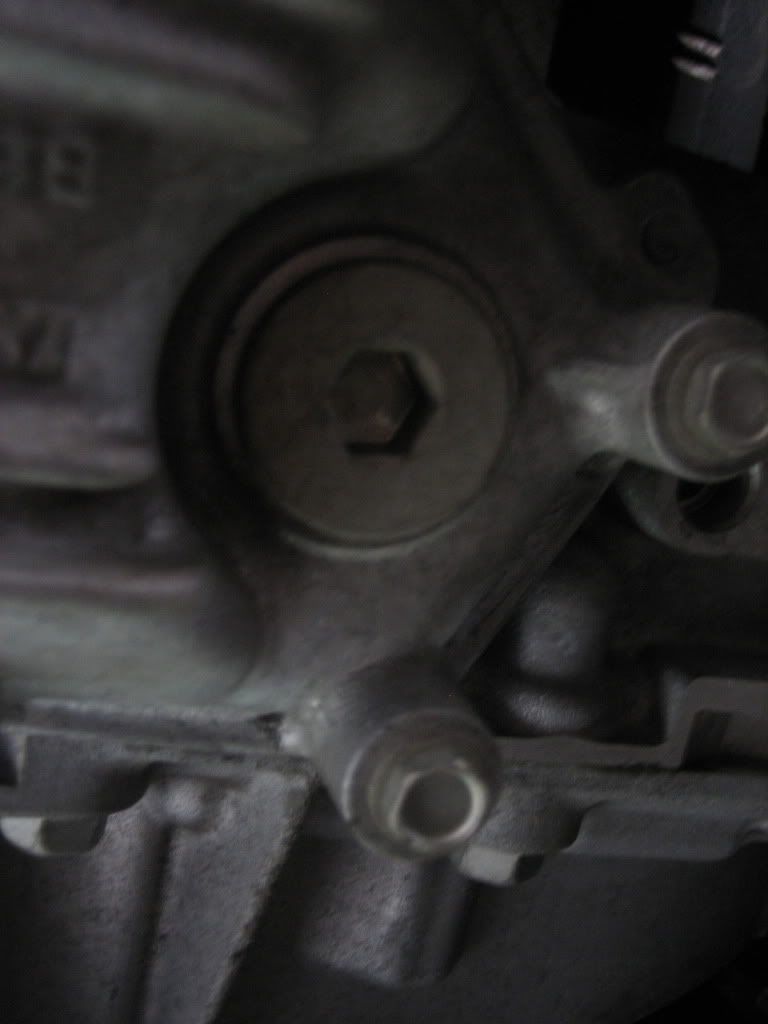
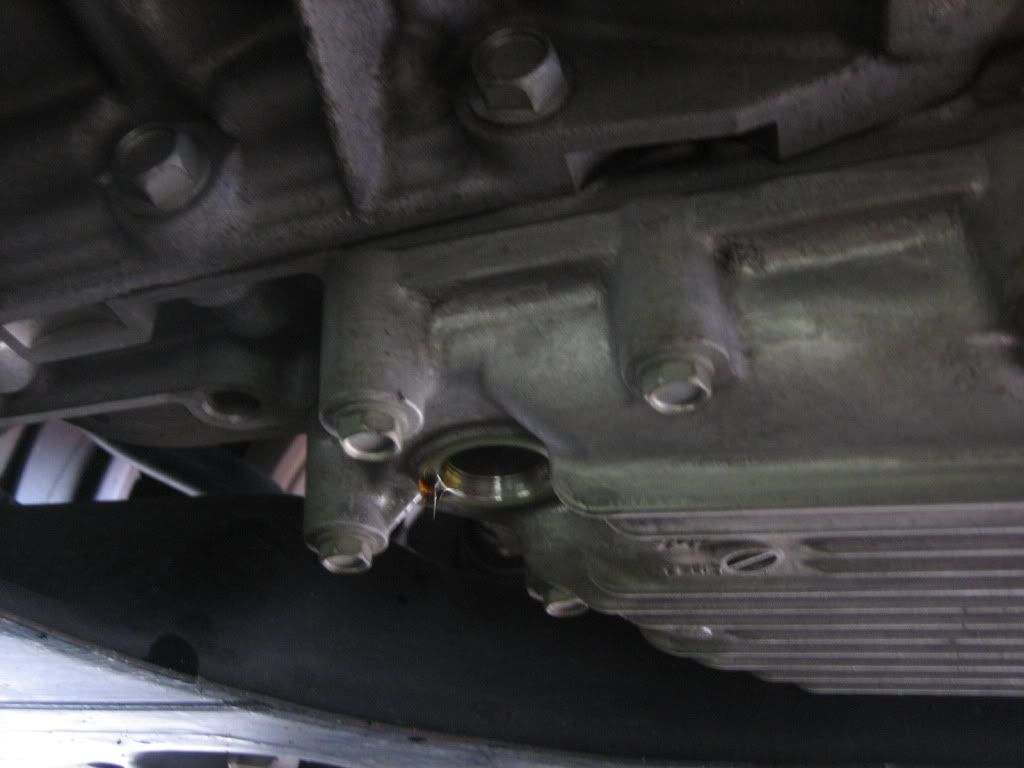
Step 4. Screw the drain plug back on. I think you can replace the o-ring on the drain plug but I didn’t do this.
Step 5. Measure how much fluid you drained out by using your container that you marked off at 1 qt. I drain roughly 4.5 qts. Add the same amount of fluid you took out back into the transmission through the recharging pipe (same place you pulled the dip stick out) using your funnel.
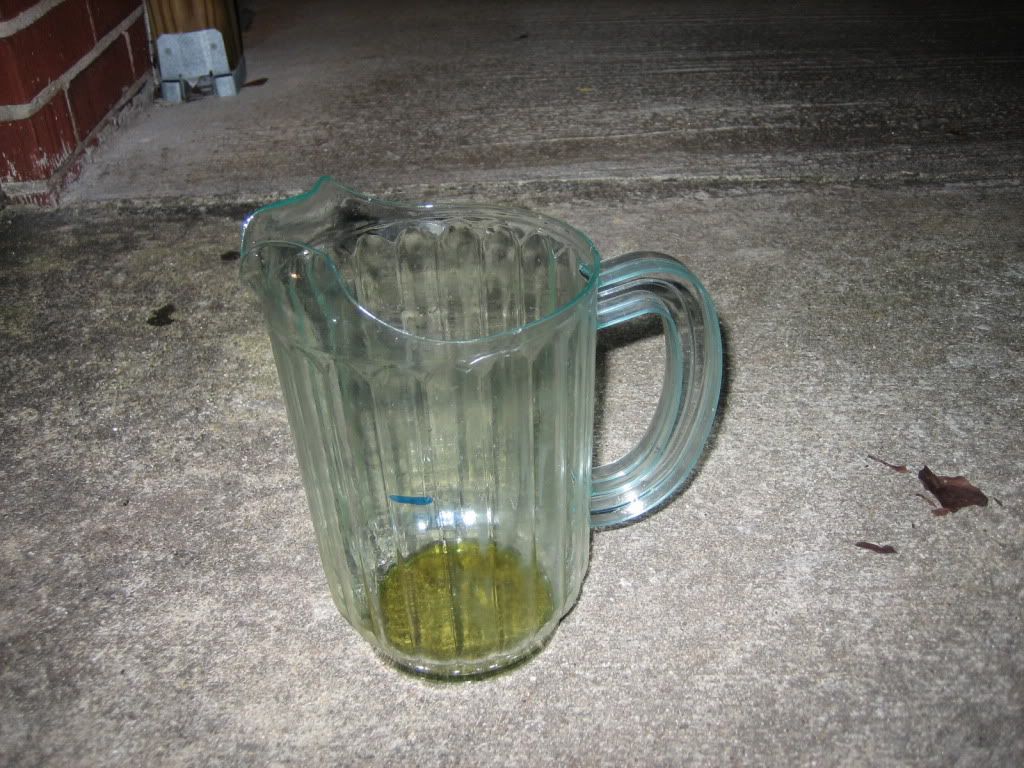
Step 6. Remove the wheel well splash guards from the driver’s side wheel (be careful with the tabs holding these on, easy to break). Take your time a pry them off slowly with a flat head screw driver. Remove to reveal the transmission fluid inlet port (where fluid comes in from the radiator).
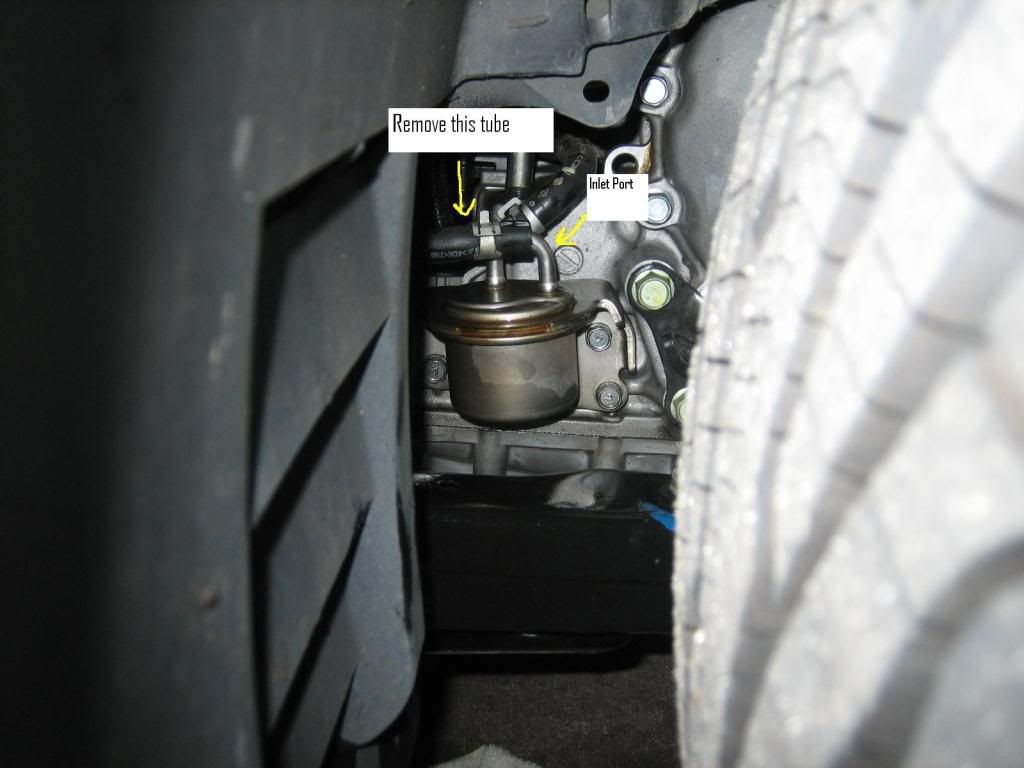
Step 7. Using your pliers, squeeze and slide off the hose clamp holding the tube onto the inlet port.
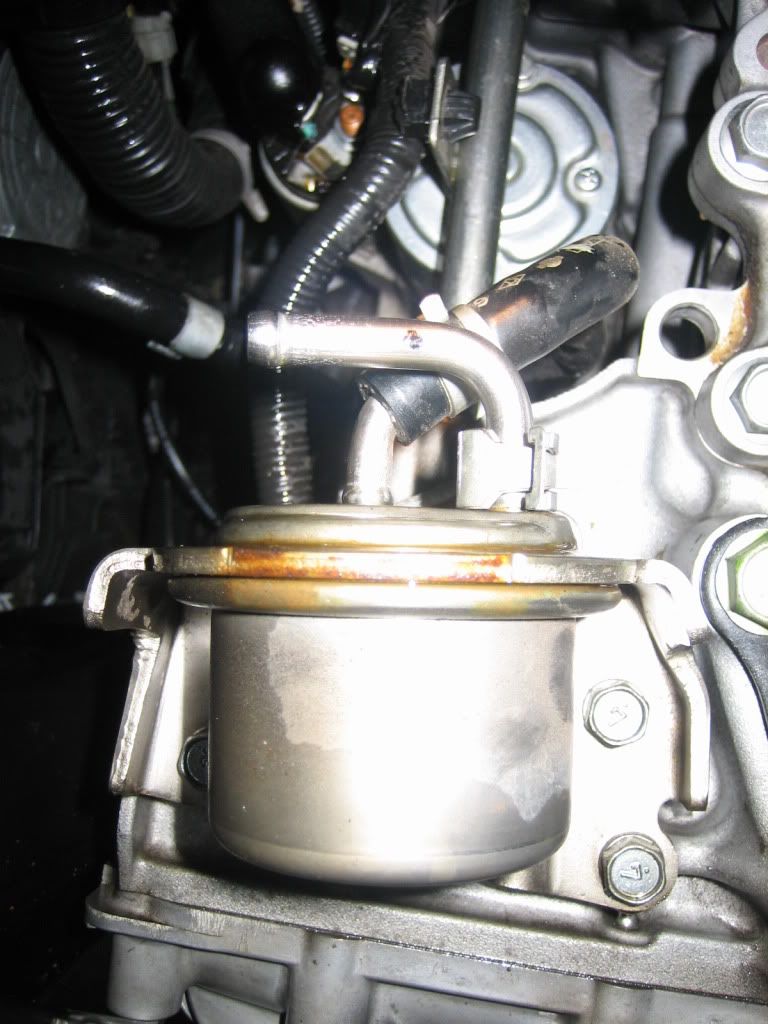
Step 8. Place the tube you remove into your 1in. diameter clear plastic tube. Direct it into your container marked at 1 qt.
Step 9. Have a friend start your car. Allow it to run until you have removed 1 qt. of fluid and then turn the car off.
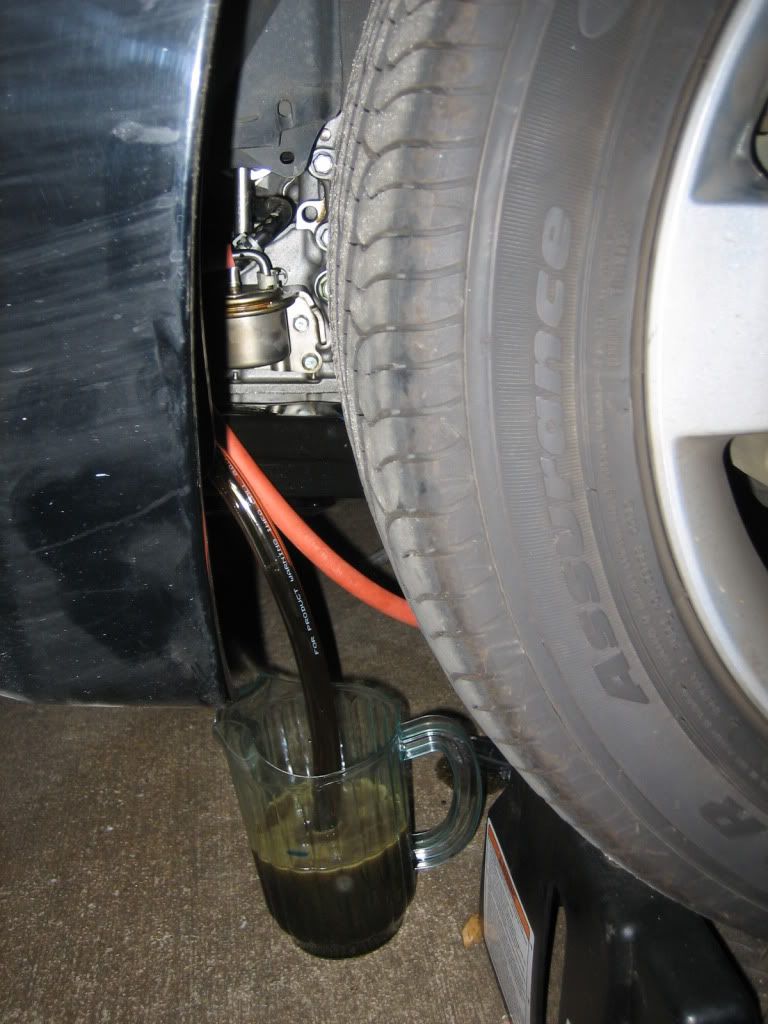
Step 10. Add a qt. of new fluid back into the transmission (to replace the qt. you flushed out).
Step 11. Repeat steps 9 and 10 until you’ve collected a replaced roughly 6 qts. of fluid. It start to get clean around 5 qts. I did an extra one for good measure.
Step 12. Reconnect your hose to the transmission inlet port and using your pliers, squeeze the hose clamp and slide it back onto the hose. This is the hardest part of the whole thing, trying the get that stupid clamp back on.
Step 13. Start the car and let it run for a minute. Go around and check for any leaks.
Step 14. Lower the car down. Run it back through all the gears and check the fluid level just as before. Adjust the fluid as needed.
Step 15. Place the splash guards back on and that’s it. You are done.




